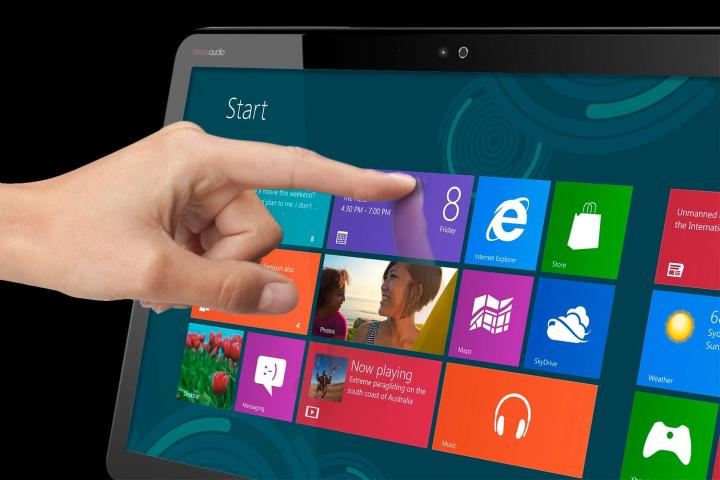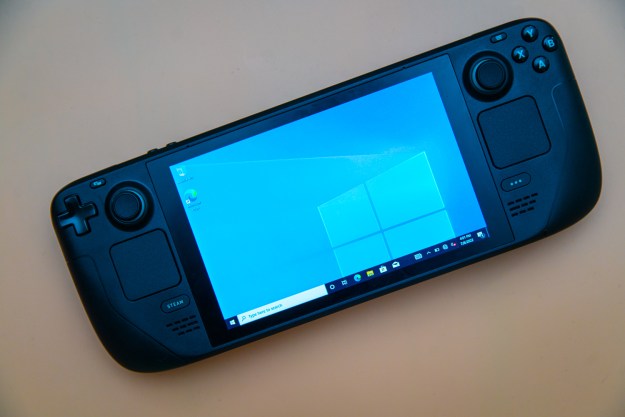
The numbers are coming in on touchscreen laptop sales, and they don’t look good. In May of this year, a report from DisplayBank, a division of market research company IHS, said that only 10 percent of laptops shipped worldwide during the first three months of 2013 had a touchscreen (this tidbit was reported as good news). And last week Bob O’Donnell, an analyst for IDC, told Computerworld that forecasts for touchscreen sales have dropped from up to 18 percent of all notebooks to between 10 percent and 15 percent of the market.
Poor sales spell big trouble for Microsoft. The company banked on touch as the next big thing, but consumers don’t seem to be buying it so far. Does this mean Windows 8 has failed to achieve its goals, or are there still a few tricks for Redmond to play?
The numbers are worse than they look
Skeptics might look at the figures and say: So what? While some success stories do take over a market overnight, most grow at a slow but steady rate. If touchscreens have taken 10 percent of the notebook market in the year, and grow at a similar rate every year, they’d be the majority of laptops by the end of 2016.

That’s true enough, but Windows is not an operating system for notebooks. Desktops still make up 30 percent to 40 percent of the market, depending on whose numbers you look at. If about half of all notebooks had touch by 2016, that’d still put total adoption at less than 50 percent because of the desktop market, which is only seeing touch embraced by expensive all-in-ones.
And it gets worse. PC sales are plummeting, so whatever slice touchscreens take is part of a dwindling pie. That in turn worsens overall adoption, because these market share figures only cover new devices, not the existing base. There are hundreds of millions of Windows users who have existing PCs without touch, and Windows 8 does not and will never provide a reason to upgrade for them.
No one wants to touch Windows 8
Windows 8’s flaws have resulted in the worst of all worlds. Instead of providing a cross-platform solution, Microsoft bred an operating system that’s not great for any particular platform. And the company stubbornly continues to encourage PC manufacturers to push Windows 8 over Windows 7, despite the fact many users who don’t care about touch would prefer to have the latter instead of the former.
Windows 8’s flaws have resulted in the worst of all worlds.
A lack of competition provides a silver lining for all this bad news. Nearly two decades of near-monopoly has left users with no alternative. Macs are too expensive for most, and Linux is too difficult to understand. But that doesn’t mean users are eager to spend. They’re looking for a way out. Tablets provide one excellent escape route, and if another appears, Windows might not survive.
What can Microsoft do?
Windows 8 is a failure. Besides providing slow sales, the operating system hasn’t slowed the PC market’s decline or spurred a massive growth in touchscreen PCs. Like any failed project, it should be abandoned. Instead of trying to patch the hull of a sinking ship, the company needs to go back to the drawing board. This might mean a new, better compromise solution, or it might mean spinning Windows and Windows RT into two very different beasts for different very different tasks. Another idea would be to expand the Windows Phone OS into the tablet space.

A greater respect for hardware could help, too. The Surface experiment failed not because the hardware was bad, but because the operating system took priority. If a feature in Windows didn’t make sense for Surface, it was kept, because getting rid of it would be forcing the software to bow to hardware. That’s sacrilege for Microsoft, which has always held its hardware agnostic approach sacred. But times are changing.
Finally, Redmond’s relations with everyone need to be mended, starting with developers. Lack of apps has been a serious problem for every Microsoft platform attempting the app store approach, and the company has provided dismal curation thus far. Serious developers need to know a platform can move units, but the current state of the Windows app store actively harms legitimate developers.
The end is nigh
Windows 8 took too long to come to market, and it has done nothing to help the PC. Now a replacement is required; but how long will it take to arrive? The iPad and Android tablets have been running amuck for over three years, and Microsoft likely won’t muster another new version of Windows until 2015. That will be five years without an effective response. Can even Microsoft’s vast fortunes survive such a dramatic miss-calculation?
The answer to that question may, in fact, have nothing to do with Windows at all. The Xbox One ships this fall, Office is still going strong, and the company’s cloud services expand every year. There are other legs for Microsoft to stand on, but Windows is currently in its most vulnerable position since Windows 3.1x; and if Windows goes over the cliff, it’ll take most of the PC market with it.
Image source: http://www.statista.com
Editors' Recommendations
- You’re going to hate the latest change to Windows 11
- How to set up Windows 11 without a Microsoft account
- Microsoft may fix the most frustrating thing about Windows updates
- How to start Windows 11 in Safe Mode
- How to remove a Microsoft account from Windows 11


